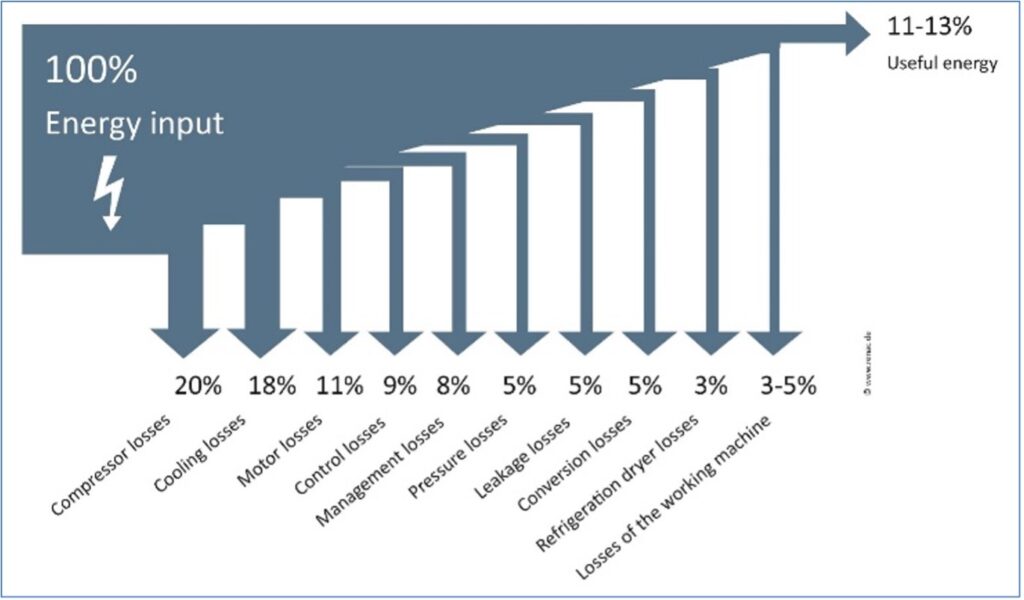Compressed air is one of the largest energy users in industry and is used for a variety of purposes:
- Working energy air – for pneumatic tools and drills.
- Active air – to operate conveyor systems.
- Process air – for drying processes, injection blow moulding, packaging, or aeration.
In some countries it accounts for up to 30% industrial electricity use.

Typical air compressor costs over a ten-year service life. Up to 73% of the cost is electricity use. Data source: Carbon Trust 2012.

Losses occur in all subsystems of compressed air system, as can be seen in this energy flow diagram of a typical compressed air system.
Measures that can potentially be taken to save energy include:
- Substituting to electrically driven systems – electrical drives have higher initial costs but lower operating costs.
- Regular and correct maintenance to reduce leaks and pressure losses.
- Correct compressor sizing. If higher pressure is only required for certain applications, secondary compressors for recompression should be used rather than basing the entire system on the highest pressure requirement.
- Recovering waste heat, using the heat recovered for other purposes such as pre-heating process water.
- Repairing compressed air leaks.

Potential energy-saving measures in compressed-air equipment.
In order to assess the energy saving potential, all subsystems need to be considered: application, distribution, processing and production.
